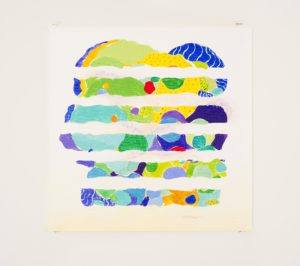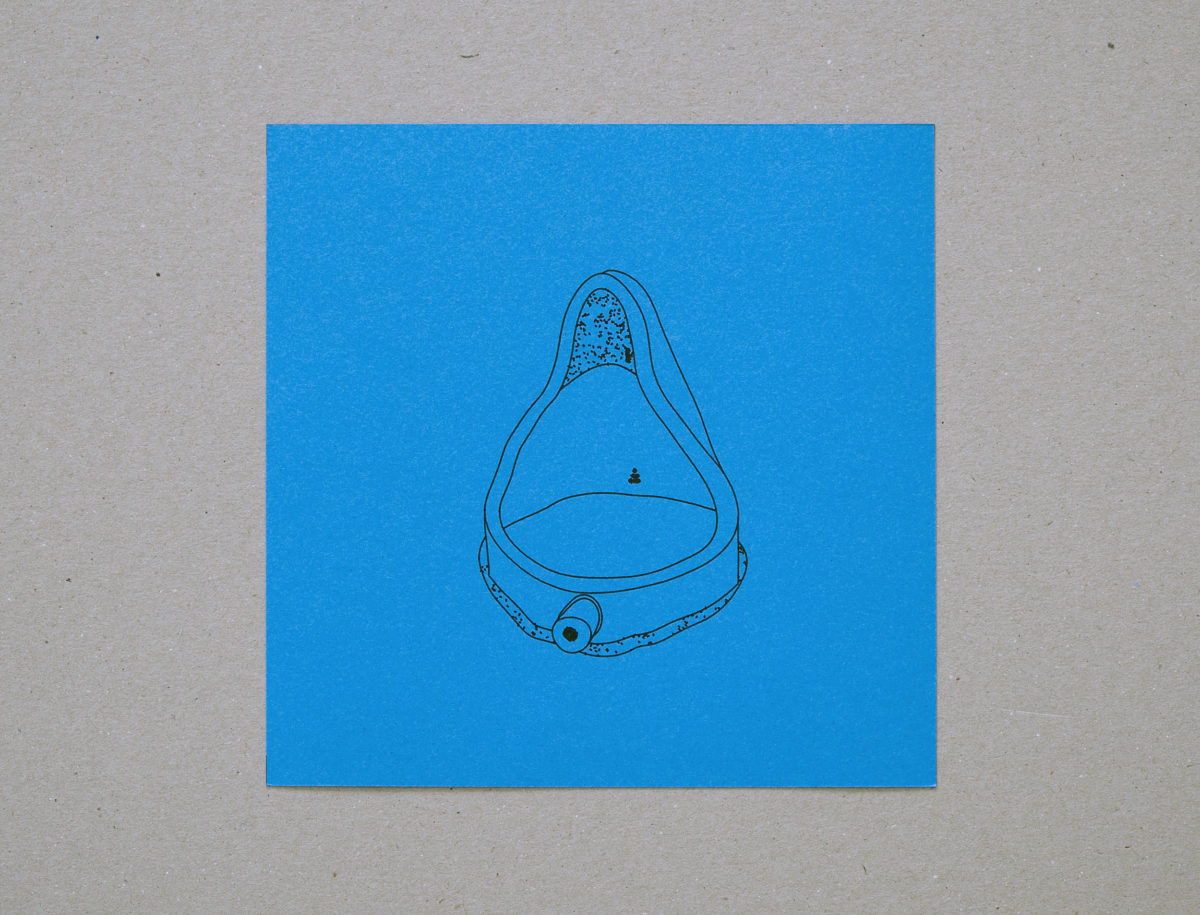For this research project I chose to look into generative software, that is code that is created to create. I chose to focus specifically on the artist Matthias Dörfelt, who’s work caught my attention due to its organic form. What I mean by that is that his work doesn’t look like what I’d imagine could come from a computer. It is imperfect, with a cohesiveness that doesn’t come at the price of hard geometric shapes or perfect lines, as are often associated with computers. His work transcends 0’s and 1’s and somehow his hand is so present through each piece of his collection, despite the fact that large amounts of his work are randomly generated with code. The biography of his website affirms this dichotomy between the perfection/rigidity of computers and the organic-nature/inconsistency of humanity; “In his works he often trades control in favor of surprise because he strongly believes in computation as an expressive, playful and humorous tool. Matthias will continue to explore these aspects by infusing technology with flaws, naivety and weirdness.” In order to make something perfect, imperfect, it must be “infused with flaws”.

It is a testament to his prowess as an artist that he is able to create such natural and human-like work from a computer that can only accept very specific commands; a tool that must be told exactly what to do with no room for error. I suppose a great test of fluency within a medium is when an artist is able to create beyond the apparent limitations of a medium, like a painting that appears to be three dimensional or a photograph that really creates a sense of scene, to the point where you feel you are in the photograph.
One thing I found very interesting is that although Dörfelt’s process is entirely digital, all of his artwork that is available for purchase is physical. Similar to a painter or photographer, he sells prints of his work online. Not only that, but since the work is created with elements of randomness, each piece is unique and there cannot be another like it. So when someone buys one of his prints, they are buying something semi-computer, semi-human, but fully original.

Dörfelt isn’t the only artist creating art with code. In my research I came across a project called Written Images, which received over 70 contributions from different media artists and developers. The project compiled 42 of the most creative generative software submissions, and essentially provided a “print-on-demand” service, where a book was created with artwork from these programs. This means that each book is unique, and that you are buying the only copy of the book that you receive. In the art world, rarity is proportional to value; the rarer something is, the more valuable it is to have it. This is why digital artists create limited amounts of their artwork; if it is available everywhere it’s value decreases significantly. Studying Dörfelt has opened my mind to the possibilities of creative coding, beyond just shapes and lines. This really seems like an entirely new avenue of expression, in which the computer is co-creator with the artist.
You can find more of Matthias Dörfelt’s work on his website. There are links to his social media profiles on the website.
You can also check out the written images project here.
If you’re interested in buying some of his work, you can do so here.


Great post Eric, thanks! How do you think he goes about making these works seem so natural? Is this something you would like to achieve in your work?
It’s pretty awesome that Dörfelt basically created a bridge between physical and computer-generated art. I would love to know more about his actual process and some of these specific artworks that you added here.
Thanks so much! I think he does this through use of many curves and shapes he creates himself, but I’m not sure how he maintains the visual consistency. I’m sure that his use of randomness is very focused and bounded, within the scale of the other shapes to maintain an overall level of balance. This is also something I would like to achieve in my work. Have been very inspired by his work. I even reached out to him and he thanked me and followed me back on instagram, haha. Do you know him personally?
It would be interesting to know what his influences are; combining code and art is becoming extremely popular. It would be cool to see his code and see how it is generated because with some code, each run creates a slightly different iteration. You talked about how he collaborated with other artists, does coding artwork make the collaborative process easier?
This is a great post! Like Allen said, it would be great to know his process for creating this artwork. I wonder which part of the artwork he randomizes, or if he puts parameters on the randomness.
It’s really cool how he’s able to translate organic, freeing movements into a very precise medium like a coding. I would like to know what influences him to create art like this and how he is able to achieve such randomness and naturalness simultaneously through code.
When I skimmed through this post before reading it, the art work totally looked like a painting or an illustration to me. I love the idea of ‘infused with flaws’ because coding technically has to have no errors in order to run. Yet the artist still found his own way to show that imperfection and organic aspects through this.
Wow, this is amazing! I agree with Leah, I totally thought this was hand-drawn at first glance. I think it’s interesting that we refer to these pieces as “flawed” even when the code works as intended. To me, it calls into question what we consider to be flaws. Uneven lines and shapes don’t have to be flaws — they’re just as valuable as straight, clean lines.
It feels strange to look at these as products of code as they really seem like someone painted them and put them in a gallery. they seem like a coded version of surrealism and it really is amazing.
This reminds me of our first assignment where we had to translate hand drawn portrait to a Processing sketch, where we noticed that the expression of personality is different in the two medium. However Dörfelt’s works seem to challenge this idea and open up a whole new possibility and exploration of the grey area between hand-produced and computer generated art. I also am intrigued in this work process that enables the creation of lines with great personality. You talked about the value of rarity in art. I think this value comes from the fact that it is difficult for painters to produce an unique piece for every single one of their audience. Do you think computer assisted artworks might change this value of rarity?
I found the question of should we buy computer generated art or even the question of how much is the value of computer-generated art in comparison to regular handmade art? It is a real tough question to think about and I think society as a whole has not yet deemed what it is yet.